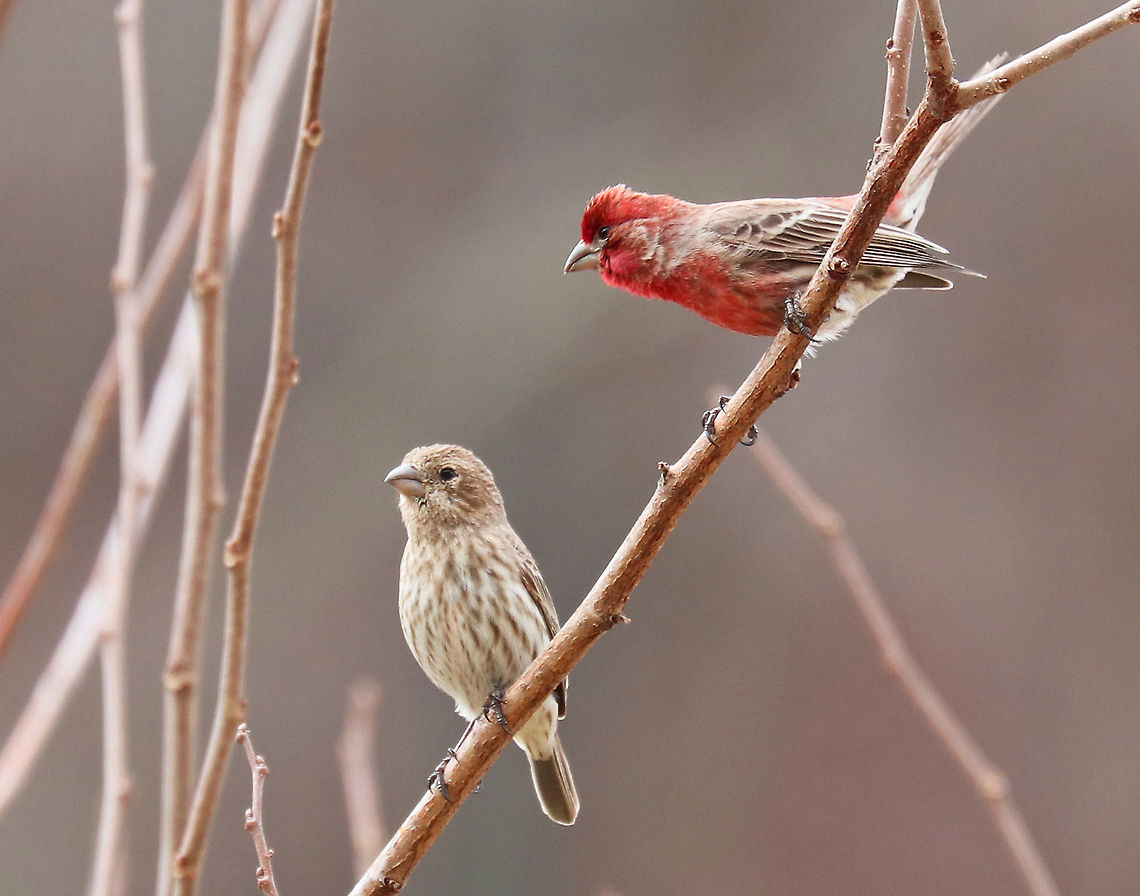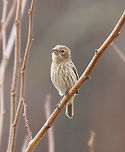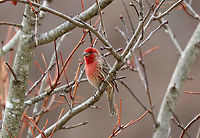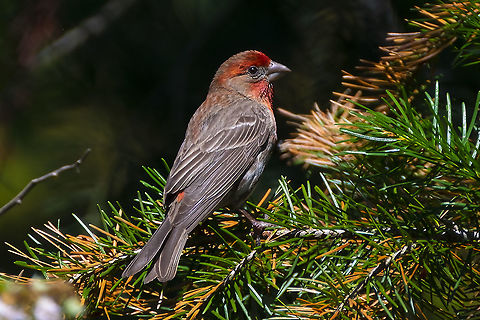 Promoted
Promoted
House Finches
Love is in the air for these house finches!
Males have a red head and breast and a streaked, brown belly. The red coloring comes from pigments contained in its food during molt. So, the more pigment in the food, the redder the male. Females seem to prefer to mate with the reddest male they can find! Adult females are grayish brown overall, with a brown head, wings, and tail, and streaked, brown underparts.
House finches come nest in my yard every year. The male particularly likes to sit in a bush next to my deck each morning and sing his beautiful, warbling songs.
During courtship, males sometimes feed the females in a display that begins with the female pecking at his bill and fluttering her wings, like a fledgling would do. The male then feeds her regurgitated food.



The House Finch is a bird in the finch family Fringillidae, which is found in North America. This species and the other "American rosefinches" are usually placed in the rosefinch genus "Carpodacus". It has been proposed to place them in a distinct genus "Burrica", but the American Ornithologists Union rejected a proposal to do so in 2008.

comments (3)
Have you ever wondered what 'love' looks like in nature? In honor of Valentine's Day, February 14th, here are 14 photos that give glimpses into the world of wild romance! #JungleDragon #wildlove
For more wild love:
https://www.facebook.com/jungledragonwildlife/ Posted 3 years ago